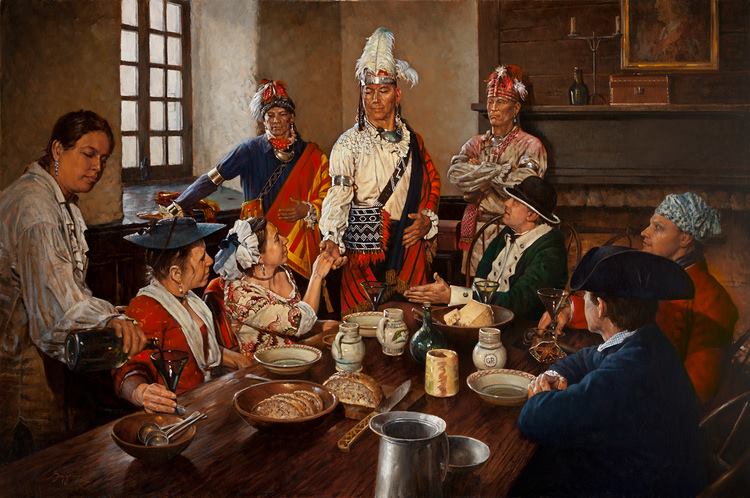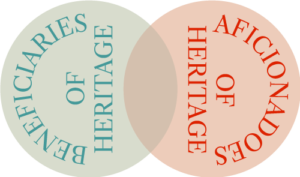
“The Introduction” by Robert Griffing. It looks as if it was referenced from one setting. I found it in a Facebook group of re-enactors; some commenters recognized people in the painting. They also identified the setting as the castle at Fort Niagara. Prints for sale by the artist, here.
During a recent Zoom seminar from the Ephrata Cloister on German dialects spoken in colonial Pennsylvania, an intriguing question was asked: why don’t today’s Pennsylvania Amish and Mennonites speak to each other in either German or Pennsylvania Dutch more than they do?
On One Hand
The answer, provided by the speaker, Mark Louden, a professor at the University of Wisconsin, was thoughtful and concise. While the most traditional orders still use the old languages in their religious observances to maintain their internal sense of identity, the more flexible orders consider it an impediment to outreach, and even think of bilingualism as a cognitive obstacle (the opposite is proven true). Prof. Louden elaborates on the “non-problem” here.
On the Other
I was reminded of an ongoing issue facing the re-enactors of the French and Indian War and the Revolutionary War: for decades, people who thought they could pass as native American with the right makeup and hair shaving would carefully study the culture of one of the relevant tribes, and portray a representative of that tribe in order to tell the whole story, warts and all, of a meeting involving them. This has angered some people who believe the only ones qualified to make such portrayal are actual descendants of indigenous American tribes, or at the very least, these portrayers should consult with the current tribe’s leaders first.
This seems to have culminated in Pennsylvania’s Historical & Museum Commission issuing new rules to take effect May 1, 2023, forbidding such practice during events at any historical venue in their control, without prior consultation with — and presumably, blessing of — the tribes. Here’s how it affected the annual Battle of Bushy Run event. (Yes, the report has a link to a PDF the state commission seems to have taken down; I have no explanation.)
The tribes’ trepidation is understandable. Between the choices they face — allowing portrayers of European heritage portray their ancestors, or assigning an actual tribal member the possibly cringeworthy task of portrayal on their behalf — they choose neither, since the intervening history is so objectionable. Many in this Hobby of mine take a different view: that portrayal is not glorification, but education, if it’s done thoroughly and with respect, and that we’re the worse off for there not to be native Americans during re-enactments of events where we know there were some in attendance, taking pivotal roles.

My Point
The common thread here is the purpose of this post. In both cases, there are two constituents:
- Those who would benefit from the telling of the complete story by means of maintenance of history.
- Those who keep history alive as a pastime, for the enjoyment and enlightenment of themselves and others.
I put the question to you, dear reader: can you think of other instances of this? Where “history geeks” can’t get those who benefit from their own historical examination interested in helping?
(Permit me this one warning: please use a different word for “woke,” as I did here.)
